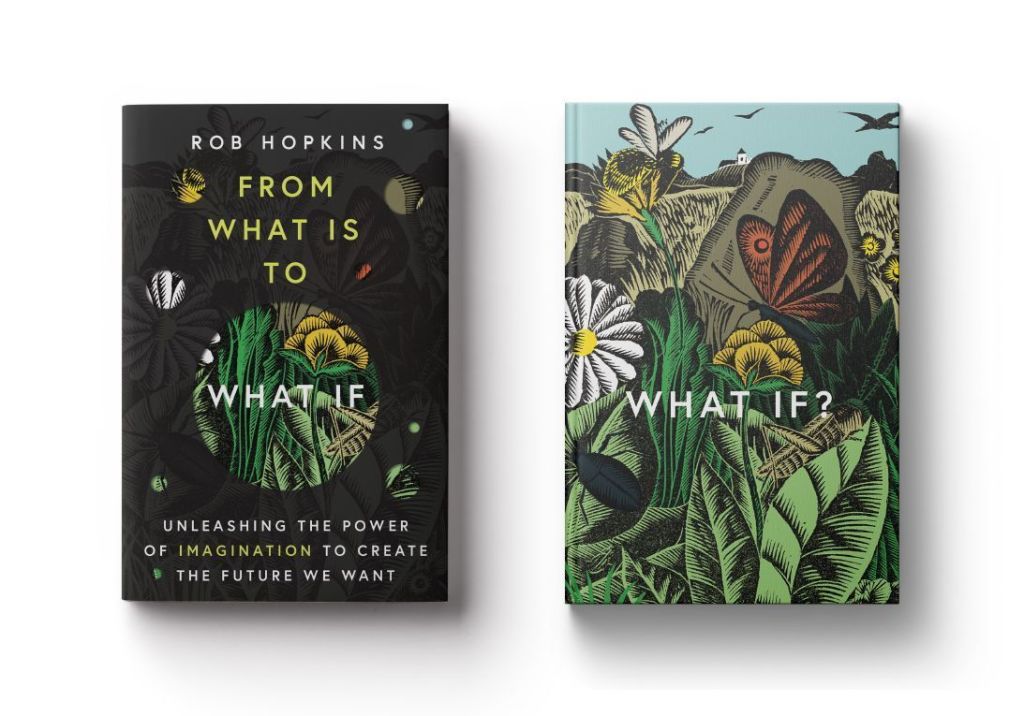What if we lived in a time when the human imagination flourished and anything felt possible.
It was back in 2008 when I first came across Rob Hopkins through his Transition Handbook. This helped shape a lot of my sustainability thinking at the time, (Time for built environment transition?) and in turn participation in Transition Town activities here in the North West. Writing in 2008, from a future 2030, Rob looked back over transition achievements, to when “in 2011, the Government initiated the concept of the Great Reskilling in the training of construction industry workers” with skills and mindset to address a sustainable future.
Of course that reskilling is still to happen within the built environment sector, and is ever important as we look to circular economy, toxic free and nature based construction techniques and materials. Fast forward to Rob’s latest book, What If …From What Is To What If … What if we had undertaken that construction re-skilling back then?.

What If does have a sprinkling of the climate doom gloom we face (and read in many climate change texts at the present) but the focus is on our capability to reimagine a better future and in asking the question how can we unleash the power of our imagination to create the future we want.
This resonates well with me, and with many of the messages I have used over recent years, in FutuREstorative in 2016 and in the series of #imaginebetter keynotes for Specifi and others through 2018 into 2019. And it is indeed core to the Living Building Challenge call to “imagine if every act of construction made the world a better place”
What If takes us on a deeper exploration of ‘imagination’ in an inspiring and urgent call for us to look deeper, to reconnect, with place, with nature, with ourselves and to reimagine a better future with a renewed sense of possibility.
Within sustainable design we focus on topics such as biophilia, that FutuREstorative described as the secret sauce for sustainability behaviour, to rekindle our believe that we can achieve a restorative future. Yet, spending 90% of our time in buildings we increasingly suffer solastalgia – a distress and yearning for earlier times, of better childhood memories, of a cleaner, more natural environment, that ebbs away our power to imagine a better environment, or reclaiming the one we have lost
Worringly, What If details how we are losing our capacity for imagination through dependency on technology, through loss of biodiversity, disconnection with nature and a degradation of of our environment, pushing us further into a spiral of being unable to imagine, and then achieve, a better future.
What is the impact on our imaginations of freefalling biodiversity and abundance? And, the corollary, is a diminished imagination to blame for the tolerance of such abject (biodiversity) tragedy?
What If revisits the power of our imagination, with stories, research and case studies, in play, as a vital element of our health, as a core element of connectivity with nature, of our ability to ask better questions and then importantly explores what if our imagination and desire for a better future came to pass.
On the dustcover, What If is described as a passionate call to action, to revive and to replenish not only our individual imaginations but a collective imagination, and once achieved there could be no end to what we may accomplish.

Rob Hopkins is the co-founder of Transition Totnes and the Transition Network



